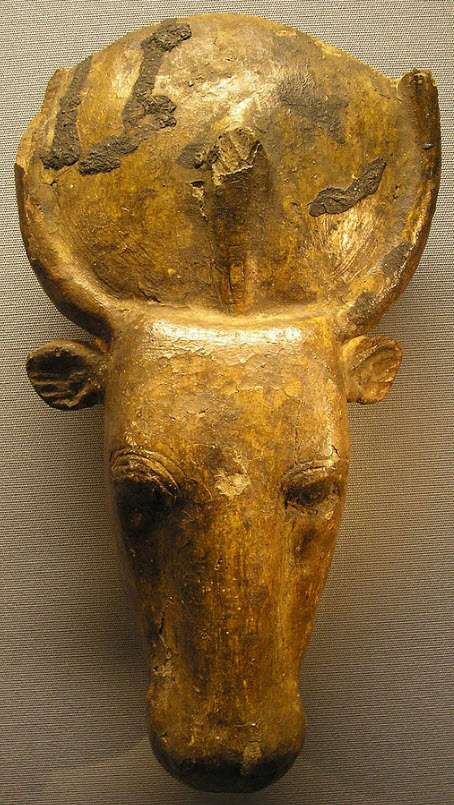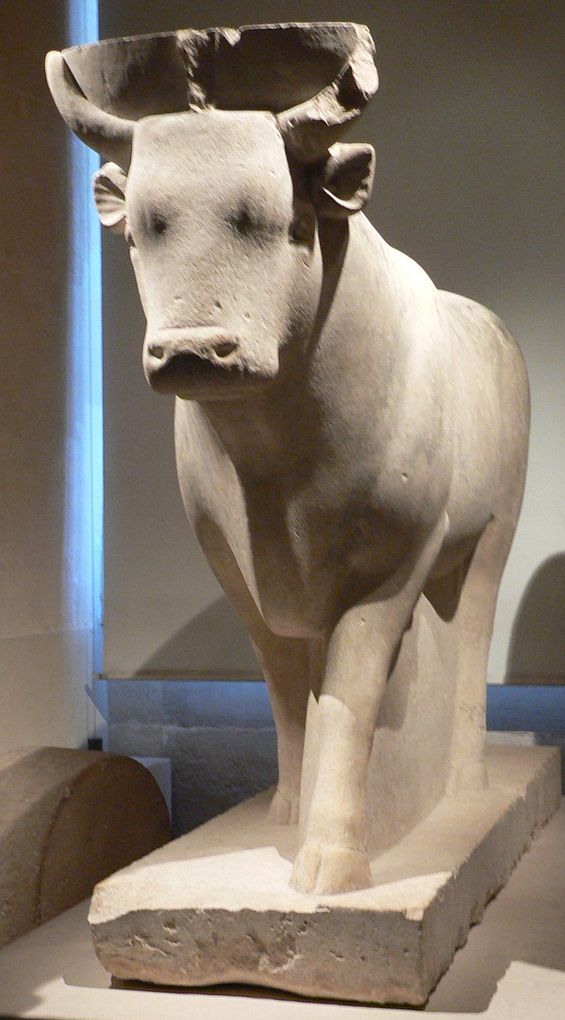What is a…
golden calf

Golden calves are mentioned in Exodus 32:4, 8; Deuteronomy 9:16; 1 Kings 12:28; and Neh. 9:18.
This was a gold scuplture of a calf which the idolatrous Israelites formed at Sinai. This symbol was apparently copied from the pagan religion of the Egyptians. It was destroyed at the command of Moses (Exodus 32:20).
41 “At that time they made a calf and brought a sacrifice to the idol, and were rejoicing in the works of their hands. —Acts 7:41
Some suggest that the golden calf which Aaron made (Exodus 32:4) was possibly a copy of the god Moloch rather than of the god Apis, the sacred ox or bull calf of Egypt. However, it is more than likely that the 2 gods are basically different versions of the same Satanically-inspired false god.

The Jews, all through their later history, showed a tendency toward the Babylonian and Canaanitish idolatry rather than toward that of Egypt.
Return to golden calf idolatry
Later, wicked kings of Israel substituted worship of the one true God with pagan idolatry.
Aften living in Egypt, Jeroboam returned to the land Israel and made 2 golden calves. At a great introduction ceremony followed by a heathen feast, he made the following blasphemous declaration to his people,
“Behold your gods, O Israel, that brought you up from the land of Egypt.” —1 Kings 12:28 NASB
These are almost the exact blasphemous words that Aaron said to the people at Mount Sinai (Exodus 32:4, 8).

Ages after this, Jeroboam, king of Israel, set up two idol calves, one at Dan, and the other at Bethel, that he might thus prevent the ten tribes from resorting to Jerusalem for worship (1 Kings 12:28).
These calves continued to be a snare to the people till the time of their captivity.
The calf at Dan was carried away in the reign of Pekah by Tiglath-pileser, and that at Bethel ten years later, in the reign of Hoshea, by Shalmaneser (2 Kings 15:29; 17:33).
This sin of Jeroboam is almost always mentioned along with his name (2 Kings 15:28, etc.).
More information
- What is a calf?
- Aaron—made a golden calf for Israel’s worship
- Moses—destroyed the golden calf
- King Jeroboam—made and worshipped golden calves
- Moloch—false god represented by a bull
- Apis—false god represented by a bull
- Buchis—false god represented by a bull
- Mnevis—false god represented by a bull
- El—false god represented by a bull
- Zeus—sometimes symbolized by a bull
- Malcam—sometimes symbolized by a bull
- Milcom—sometimes symbolized by a bull
- Nergal—sometimes symbolized by a bull
- Dionysus—sometimes symbolized by a bull
- Hadad—sometimes symbolized by a bull
- Answers about idolatry and false gods in the Bible
- What is an idolatrous worshipper?
- Idol worshippers kissed their idols
- About idols in the Bible
 Answers about Ancient Egypt in the Bible
Answers about Ancient Egypt in the Bible- bullocks
- Oxen in the Bible
- Answers about gold in the Bible
- Goldsmithing in the Bible
- What is beaten gold in the Bible?